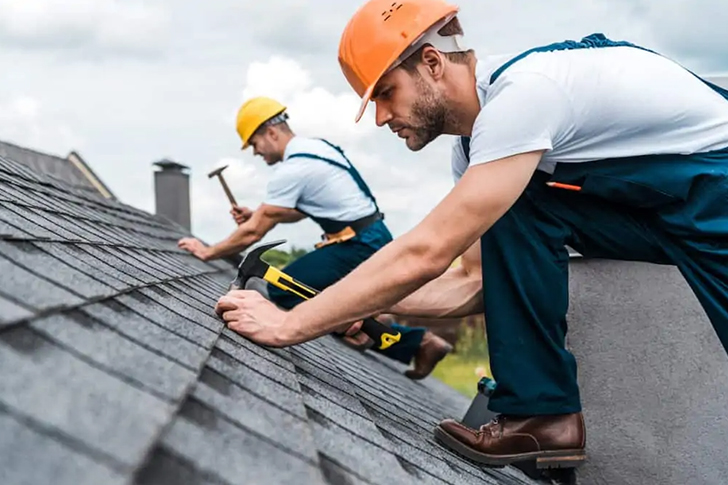Understanding Roof Replacement Costs: Is It Time for a New Roof on Your Home?
Roof replacement is a significant home improvement project that demands careful consideration due to its impact on both your property’s structural integrity and financial worth. Knowing when to undertake this considerable investment and what factors contribute to the overall costs can help homeowners make informed decisions. This article delves into the essentials of roof replacement, including timing, cost factors, and the process involved.

Signs You Might Need a Roof Replacement
Several indicators may prompt a roof replacement, rather than just repairs. Visually, if your roof shows signs of significant wear such as broken or missing shingles, noticeable sagging, or sunlight peeking through your attic, these could be clear signals that your roof’s lifespan is nearing its end. Additionally, if your roof has surpassed 20 to 25 years, which is the average lifespan of most shingle roofs, it might be time to consider a replacement. Occurrences of frequent leaks or major water damage are also critical signs that your roof might need replacing rather than repairing.
The Cost Dynamics of Replacing a Roof
The cost of replacing a roof varies widely, typically ranging from $5,000 to $15,000 or more in the United States, largely depending on several factors. The size of the roof is the most notable factor, with larger roofs requiring more materials and labor. The type of materials chosen also affects the overall cost significantly; for instance, asphalt shingles are considerably more affordable than options like metal, tile, or slate, which can be considerably more expensive.
Geographical location plays a role too. Labor costs can vary dramatically between regions based on local economic conditions, the cost of living, and the demand for roofing services. Complexity and pitch of the roof are likewise influential; a complex, steeply pitched roof requires more time and safety precautions, which can increase labor costs.
Choosing the Right Materials
When planning for a roof replacement, choosing the right material is crucial not only for budgeting but also for achieving the desired durability and aesthetic. Common materials include:
- Asphalt Shingles: The most popular due to their cost-effectiveness and decent lifespan of about 20 to 30 years.
- Metal Roofing: Offers longevity (up to 50 years or more) and excellent weather resistance but at a higher cost.
- Tile and Slate: These are highly durable (can last over 100 years) and add stunning aesthetic appeal but are often the most expensive options and require sturdy structural support due to their weight.
Each material has its pros and cons, so consider your climate, house style, and budget when deciding.
Potential Additional Costs
Beyond the basic roof materials and labor, there can be additional costs that need consideration. These may include:
- Removal of Old Roofing: Depending on the state laws and the multiple layers of existing roofing, it might be necessary to remove the old materials before installing a new roof, which can add to the overall costs.
- Repairs and Upgrades: Sometimes, structural repairs are necessary if damage beneath the old roofing material is discovered. Additionally, you might consider upgrades like better insulation or a waterproof barrier that can add to the initial expense but provide long-term benefits in energy savings and protection.
- Permits: Most localities will require a permit for a roof replacement, the cost of which can vary based on the size and value of the roofing project.
Is It a Worthwhile Investment?
While the upfront costs of a roof replacement can be daunting, it’s an investment that adds substantial value to a home. A new roof not only enhances curb appeal but also bolsters the structural integrity of your home, improves insulation and, as a result, energy efficiency. Moreover, a new roof can translate into higher property value—an appealing factor should you decide to sell your property.
In calculating the return on investment (ROI), data suggests that a roof replacement offers an ROI of about 60% to 65%. This data is critical when considering a roof replacement purely from an investment perspective.
Making the Decision
Deciding whether to replace a roof involves weighing immediate costs against long-term benefits. Assess the age of your existing roof, the extent of any damage, and whether you’re planning to sell your home soon. Considering these factors will guide you in making an informed decision that balances practicality and financial investment. Consulting with local roofing professionals can also provide detailed insight into the necessity, timing, and costs associated with a roof replacement tailored to your specific circumstances and location.
Conclusion
Understanding the nuances of roof replacement costs and implications helps homeowners make strategic decisions about this significant investment. By assessing signs of degradation, selecting appropriate materials, considering all potential costs, and evaluating the investment value, homeowners can navigate the complexities of roof replacement with confidence. Ultimately, a well-timed, well-executed roof replacement can secure both your home and your financial future.







Recent Comments